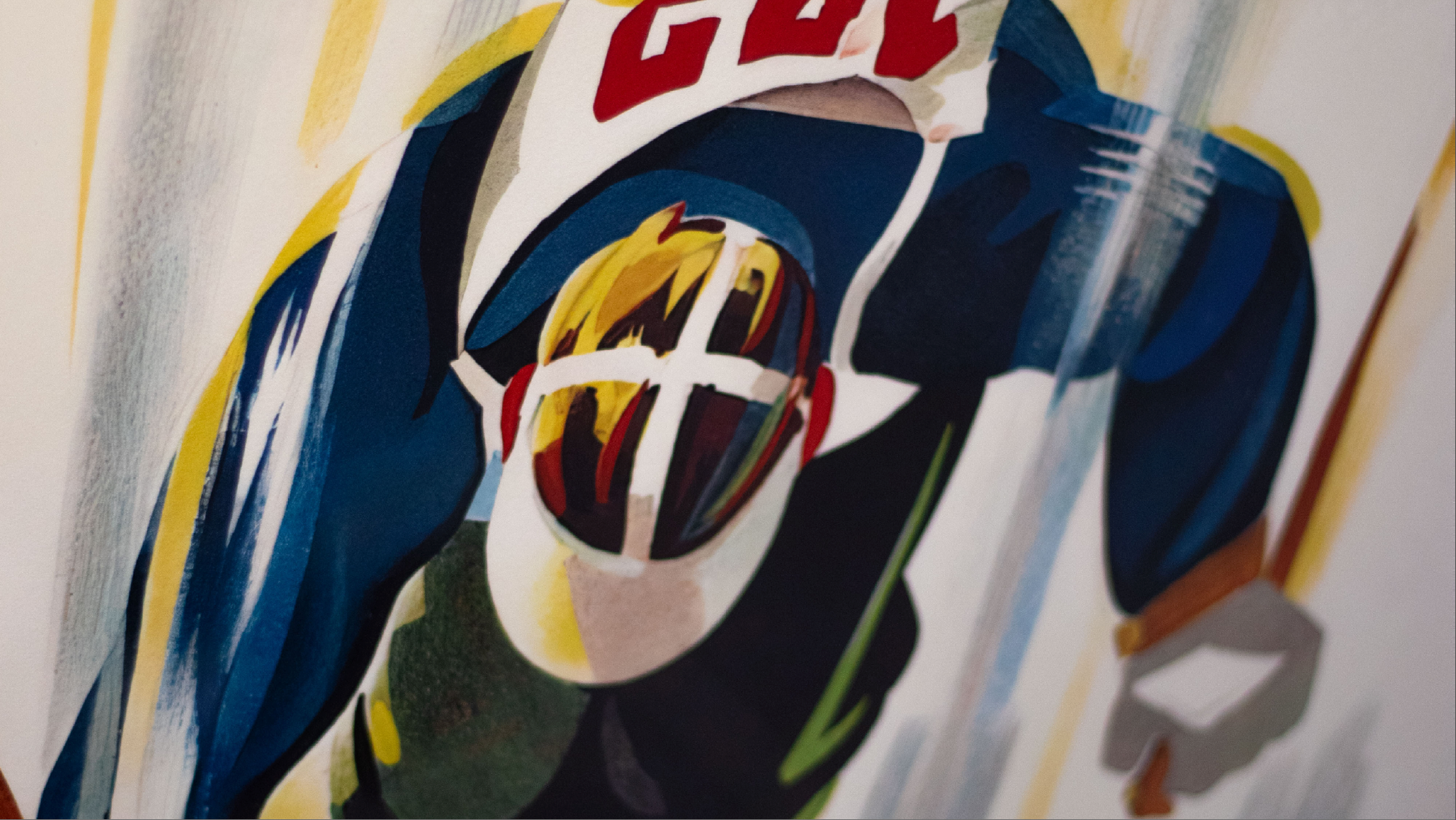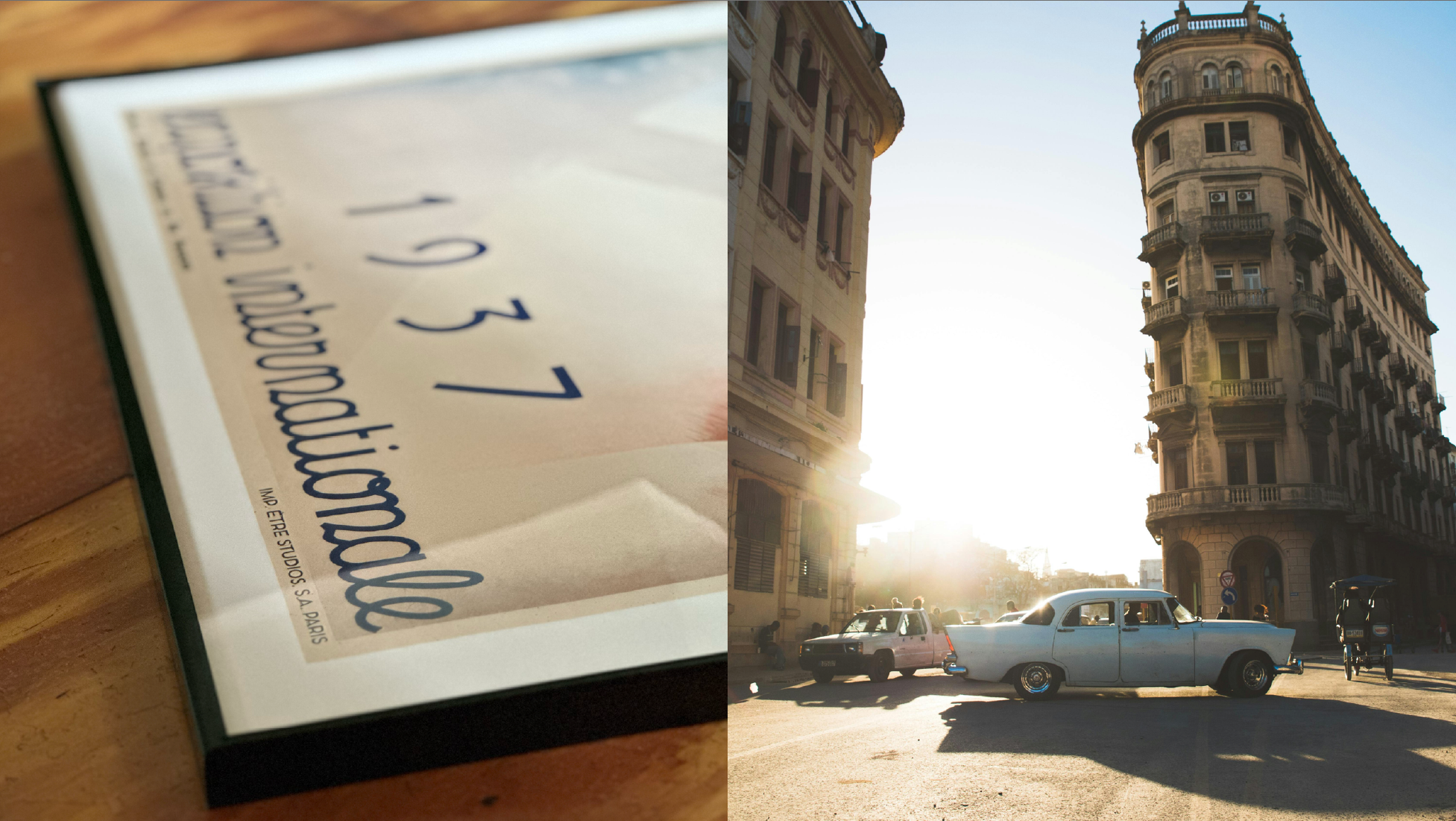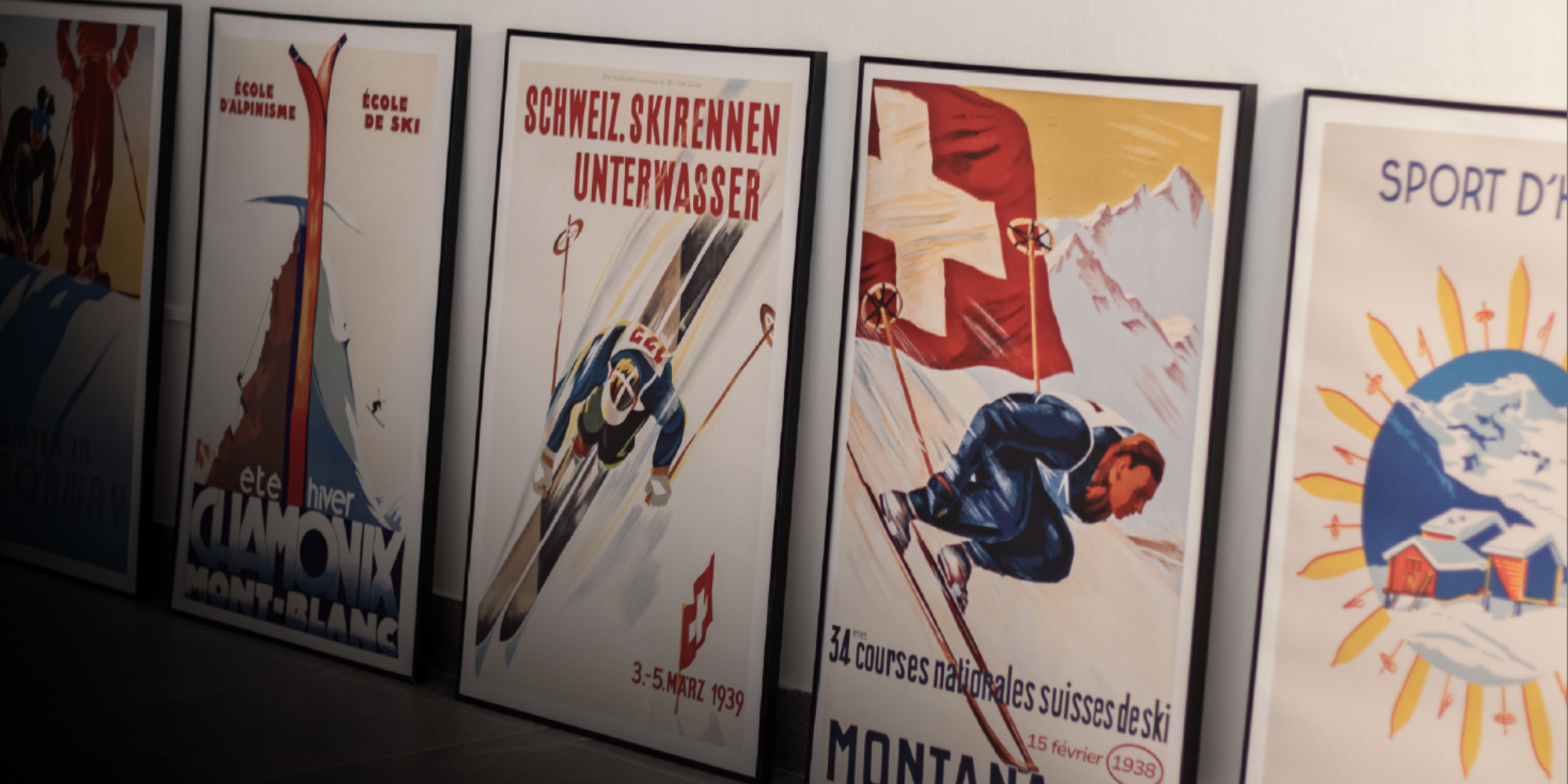Why Vintage Posters Are More Than Decor
Walk into a room and the walls tell the story before anything else. The sofa, the chairs, the lamps may set the function, but the art carries the voice. Too often that voice is muted, chosen for convenience rather than meaning. A framed print ordered in haste. A generic piece found at a discount store. But art can do more. Art can speak of time, of memory, of journeys taken or waiting to be made. Among the richest examples of this are vintage travel posters.
To call them “decor” is to miss their essence. These works are not filler. They are not afterthoughts. They are investments in history, design, and artistry. Created in an age when print was the most powerful medium, they were built to capture imagination, to turn a passerby into a traveler. Nearly a century later, they still carry that same ability. A vintage travel poster does not sit quietly on a wall. It pulls you in.
The Origin of Travel Posters
The first decades of the twentieth century marked a revolution in travel. Railways reached across Europe, ocean liners crossed the Atlantic with speed, and new airlines began carrying passengers into the air. With this came the need to sell the dream. Posters were commissioned by rail companies, tourism boards, and shipping lines. The artists behind them were not mere illustrators but masters of composition.
Roger Broders gave the French Riviera its bold elegance, painting blue seas and sunlit cliffs with precision. Cassandre turned ships and trains into symbols of modernity, using sharp geometry and shadow. Martin Peikert and Donald Brun lent charm to the Swiss Alps with playful yet exact forms. These artists were pioneers, blending art and commerce into a single image that had to catch the eye in an instant.
The result was art that transcended advertisement. These posters were not meant to be collected, yet collectors emerged almost immediately. They recognized the skill in the lines, the balance in the colors, the clarity of the vision. Today, the originals hang in museums and fetch extraordinary prices at auction. Reproductions allow the rest of us to live with them, not as mere décor but as pieces of a cultural legacy.
The History They Carry
Every vintage poster is a time capsule. It shows not only the landscape of a place but the mood of an era. A poster for Chamonix in the 1930s does not only display the peaks and ski slopes. It captures the optimism of interwar Europe, when leisure travel became possible for the middle class. A poster for an ocean liner in the 1950s reflects both the excitement of crossing the Atlantic and the technological pride of modern engineering.
Owning a reproduction of these works is a way of preserving that history. They are reminders of a world before screens, when the first glimpse of a destination came not from a phone but from a poster hung in a station or on a city wall. That immediacy still resonates. To stand before one today is to feel the same pull that once lured a traveler onto a train bound for the Alps or a ship steaming toward New York.
Artistry Beyond Decoration
The artistry of vintage posters lies in their clarity. Every element serves a purpose. The typography is bold yet harmonious. The colors are saturated, designed to be seen from a distance. The compositions are simple, stripped of excess, yet full of depth. This is why they remain powerful in modern interiors.
In a world where much wall art is designed to blend in, vintage posters stand out without overpowering. They are bold but not loud. They bring color but not chaos. A framed poster of the Riviera can sit above a linen sofa and add life without breaking calm. A ski poster in an office can provide energy without distraction. The artistry is balanced. It knows how to speak just enough.
Investment in Permanence
Unlike disposable décor, these works carry permanence. Originals, when available, command high values at auction, reflecting their status as collectible art. Even reproductions hold weight because they are tied to real artists and real history. They are not invented designs or computer graphics made to fill catalog pages. They are part of a tradition that shaped how the world saw itself.
To invest in a framed vintage poster is to choose permanence in your home. It is to place something on your wall that will remain relevant as seasons change. Trends may shift toward minimalism or maximalism, muted tones or bright palettes, but a poster that has lasted a century will last another. It is not a trend. It is proof of what endures.
How They Transform a Space
A vintage poster changes a room not by decoration alone but by suggestion. A Riviera poster brings the glow of the Mediterranean into a city apartment. A Swiss railway poster carries the cool air of mountains into a warm living room. A Japanese travel poster fills a quiet study with energy and movement.
These are not illusions. They are invitations. They ask you to step into the scene, if only in imagination. They remind you that the world is larger than the walls around you. This is why they are more than décor. They transform mood as much as they transform space.
Modern Design with Vintage Roots
Interior designers turn to vintage posters because they strike the balance between history and modernity. Their bold lines and vivid colors complement contemporary furniture while adding warmth. They work in minimalist apartments, rustic houses, and modern lofts alike. They can be a single centerpiece or part of a gallery wall.
The versatility lies in their design. A poster does not demand an era-specific setting. It carries its own timeless aesthetic. Whether in oak frames that match Scandinavian interiors, black metal frames that sharpen industrial spaces, or white frames that suit clean modern homes, the poster adapts. The art is not bound. It lives wherever it is placed.
Cultural Connection
Beyond design, posters carry cultural connection. They represent more than the place they depict. They represent the idea of travel itself, of leaving home for something new. They reflect the optimism of human movement, the belief that life can be expanded by crossing borders.
To hang one in your home is to share in that cultural legacy. Guests see not only a picture but a story. They may recall their own travels or be inspired to make new ones. The art becomes a point of connection, a conversation, a spark of imagination.
Living with Vintage Posters
The daily presence of these works matters. A poster is not a painting locked in a museum. It is art that was made to live with people, to be seen in ordinary life. That tradition continues today. To walk past one each morning is to carry a piece of history into your day. To see it again at night is to be reminded of beauty beyond the routine.
This is the essence of why they are more than décor. Décor fades into the background. Posters remain active. They keep speaking.
Bringing It Home
The artistry, history, and permanence of vintage travel posters make them a choice beyond simple decoration. They are investments in spaces that feel alive and connected to the world. They are reminders of journeys taken and journeys still ahead. They are art that carries weight and meaning.
At Être Studios, we curate and produce reproductions of these works with the same respect they earned when first created. Printed with archival inks on museum-grade paper, framed with oak or metal and tempered glass, they are designed to last. The goal is not only to decorate but to preserve, to carry forward art that has already stood the test of time.
Explore our collections, from the peaks of the Swiss Alps to the shores of the Mediterranean. Each poster carries more than color and form. Each carries history. Each carries artistry. Each is more than décor.
Bring one into your home and let it speak for itself.








































